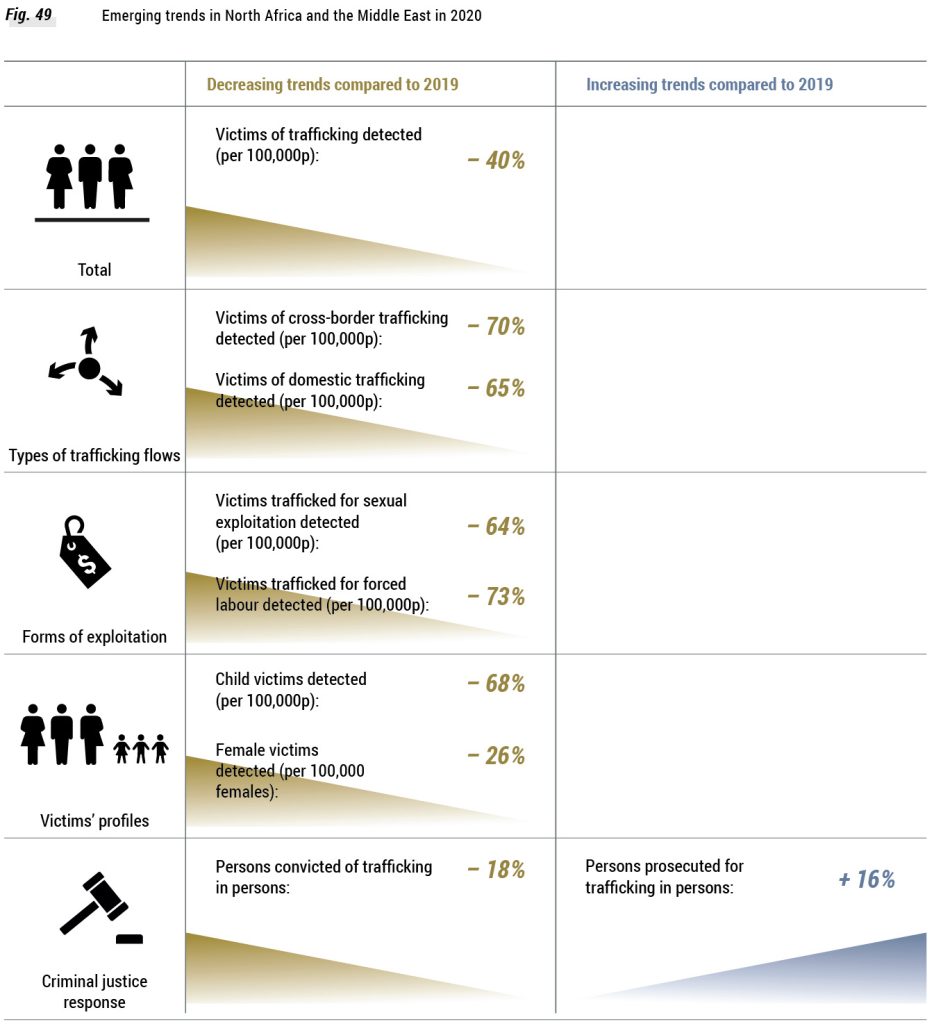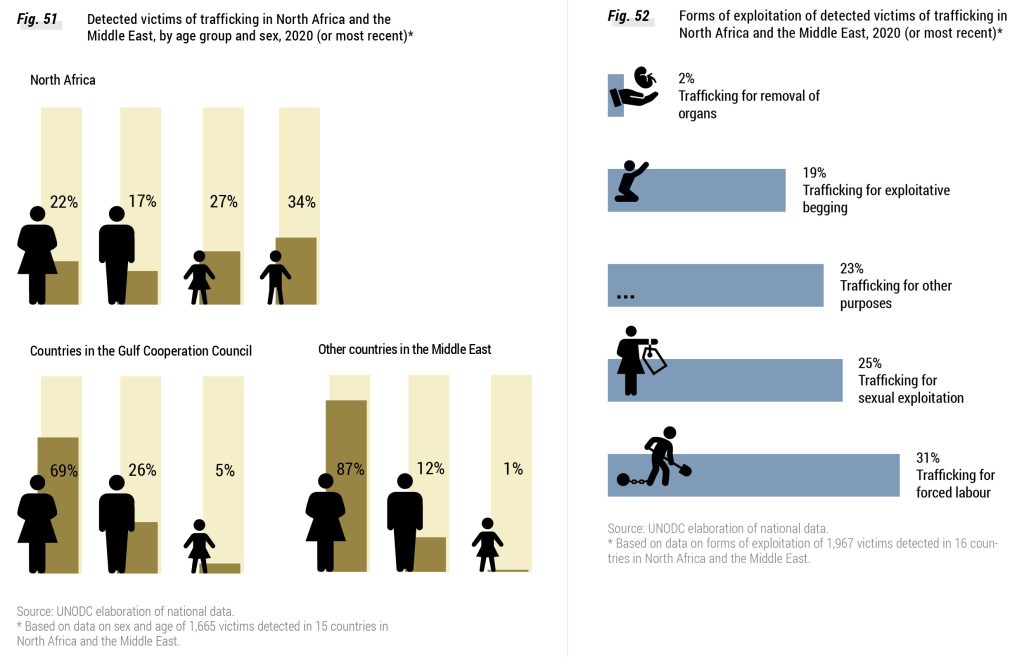Key figures on trafficking in the region
According to the 2022 United Nations Office on Drugs and Crime (UNODC) Global Report on human trafficking, in the Middle East and North Africa region, there has been a 70% decrease in the number of victims of cross-border trafficking detected in 2020 compared to 2019, including a 68% decrease in the number of detected cases of child trafficking.
While in Western and Southern Europe, it was reported in 2020, a 22% increase in detected victims compared to 2019, mostly men, as well as a decrease in prosecutions and convictions. Some of the victims detected were exploited in criminal activities or mixed forms of trafficking.
In sub-Saharan Africa, children continue to account for the majority of detected victims of trafficking. Between 2019 and 2020, the rate of child victims per 100,000 inhabitants increased by 43%. Compared to other regions of origin of cross-border trafficking, victims from sub-Saharan Africa are detected in an increasing number of countries, both inside and outside the region of origin.




Profile of victims of trafficking in human beings
Traffickers usually target victims who are in a vulnerable position (foreigners, poor people, minors …) in order to better exploit them. It then becomes very difficult for victims to escape exploitation. They may be threatened with reprisals or blackmail (they or their relatives), they may also be victims of physical, emotional or sexual violence, their identity papers may be confiscated…
The gender of the victim depends on the form of trafficking. For example, women are widely victims of sexual exploitation while the rate of men who are victims is 10% (UNODC Global Report 2022).
The case of victims of forced labour can also be mentioned, they represent 39% of the total victims of trafficking in 2020 (UNODC Global Report 2022), the majority of whom are men. However, women and girls account for a third of the victims, their presence depending on the type of industry. They are in the majority in the textile sector while men are in the majority in the construction sector.
Profile of traffickers
According to UNODC’s 2022 Global Report on Trafficking in Persons, most convicted traffickers worldwide are men, while women account for 40% of traffickers in 2020. However, the gender of convicted traffickers also differs by region. Countries of origin of traffickers tend to condemn women and girls more than countries of destination. This is because women play a more active role in the recruitment and follow-up phase.

